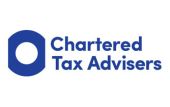
Gould and the taxation of dividends
Key points
- When does a dividend become due and payable?
- When a dividend is paid, s 1168 tells us when it is to be treated as having been paid for tax purposes.
- Interim dividends are not due and payable until they are paid.
- If Peter and Nicholas had each had a different type of share, it might have been possible to arrange things so that dividends could be declared separately on each class.
Once upon a time, there were two brothers. Peter and Nicholas Gould owned a successful business, Regis, that decided to pay a dividend of £40m. So, an interim dividend of £20m each was declared on 31 March 2016. £20m was paid to Nicholas on 5 April, which was helpful, as payment the next day, ie in tax year 2016-17, would have carried a higher rate of income tax.
Peter’s dividend payment was delayed. He lived in Jamaica and worked in the US, but he was finding it hard to open a bank account in Jamaica. Also, for family reasons, he had spent a lot of time in the UK during tax year 2015-16, so his residence status was not clear. Therefore, he preferred to have his dividend paid in tax year 2016-17, when he was definitely not resident in the UK. In fact, it was not paid until 16 December 2016.
HMRC challenged the position and argued that he was entitled to the dividend on 5 April 2016 and should be charged to income tax accordingly. (We infer from this that HMRC considered him to be UK resident in tax year 2015-16, of course.) The case proceeded to the First-tier Tribunal, who found for Peter, and thence to the Upper Tribunal.
Tax technical background
Shareholders are charged to income tax on dividends by ITTOIA 2005, s 383(1), and s 384(1) tells us that the tax is charged ‘on the amount or value of the dividends paid … in the tax year’. However, CTA 2010, s 1168(1) states that ‘dividends are to be treated as paid on the date when they become due and payable’. So the real question is, when does a dividend become due and payable?
Just to be clear, CTA 2010, s 1168 does not deem a dividend to have been paid. But when a dividend is paid, s 1168 tells us when it is to be treated as having been paid for tax purposes. So, in effect, HMRC was arguing that the dividend paid to Peter on 16 December 2016 was due and payable on 5 April that year, when Nicholas’ dividend was paid.
The typical articles of a company will cater for dividends of two types: final dividends, which are declared by the company’s members in general meeting, and interim dividends, which can be declared by the directors. In terms of the tax position, it is generally accepted that final dividends are due payable when they are declared, unless the resolution declaring the dividend states a later date for payment. Looking at this another way, when a final dividend has been declared, there is an enforceable debt from the due date for payment.
Conversely, it is generally accepted that interim dividends are not due and payable until they are paid, following the decisions in Lagunas Nitrate Co Ltd v Schroeder & Co and Schmidt (1901) 85 LT 22 – a company law case about the directors changing their minds about paying an interim dividend – and Potel v CIR 46 TC 658 – a tax case that turned on when interim dividends were due and payable for tax purposes. This is important because, if the company’s circumstances change, or if the directors change their minds, they may choose not to pay the interim dividend, after all. Therefore, no enforceable debt arises when the interim dividend is declared.
The issue here, of course, is that an interim dividend was declared at the same time to both brothers, but they were paid eight months apart, largely for tax reasons, which is no doubt why HMRC’s interest was piqued.
First-tier Tribunal
HMRC’s arguments were that Peter had an enforceable debt by virtue of either the articles of association or general principles that require shareholders to be treated equally. And even if these general principles did not apply, Peter would have been able to obtain an order for payment under a petition for unfair prejudice under section 994 of the Companies Act 2006.
Peter argued that he should be treated as having varied his rights following the Duomatic principle, regardless of when it would otherwise have been due and payable, and that he had effectively waived his right to be paid at the same time as Nicholas.
HMRC largely relied on Doherty v Jaymarke Developments (Prospecthill) Ltd 2001 SLT (Sh Ct) 75, a case that involved a majority shareholder paying himself a large interim dividend and not informing the minority shareholders. That company had the same standard Table A articles as Regis and part of the ratio in that case was that article 104 (see below) did not permit discrimination between shareholders. The FTT took the view that it was not obvious that article 104 applied to interim dividends but, even if it did, the tribunal did ‘not accept that whether by reading art[icle] 104 in isolation or by taking into account a universal principle of equal treatment of shareholders, art[icle] 104 is to be read as creating a debt’.
This meant that HMRC had lost the case, but the tribunal decided to review the other arguments, for completeness.
The Duomatic principle – from Re Duomatic Ltd [1969] 1 All ER 161 – can be summarised as ‘the principle that anything the members of a company can do by formal resolution in a general meeting, they can also do informally if all of them assent to it’ (Palmer’s Company Law (25th edition, 2020), paras 7.434–7.449; and P Watts, Informal unanimous assent of beneficial shareholders (2006) 122 LQR 15). The point here was that, regardless of the wording or meaning of the articles of association, the members of the company, Nicholas and Peter, had agreed that Nicholas would be paid on 5 April 2016 and that Peter’s dividend would be paid later. This was clear from the evidence. Even if there were not a formal agreement, it was clear that the brothers assented to this course of action having received detailed advice. In effect, the articles were, at least temporarily, amended to remove any requirement for equal treatment of the shareholders. Therefore, again, paying a dividend to Nicholas did not create an enforceable debt for Peter.
The tribunal found the question of whether there was a waiver more difficult but found that Peter had waived his right to enforce payment at the same time as Nicholas, and that the agreement that he would be paid the dividend eventually was sufficient consideration. Consideration in this context, as with any other, needn’t be monetary but in the absence of good consideration the waiver would have simply been an unsupported promise and therefore unenforceable. This is why the tribunal spent some considerable time considering different forms of notional consideration which could satisfy the test if, in the alternative, the articles were not found to have been amended.
Finally, the tribunal decided that Peter would not necessarily have succeeded in a petition for unfair prejudice under CA 2006, s 994 given his clear agreement to the position. And even if a petition were successful, ‘it cannot be said with any confidence that the court would have ordered the payment of the dividend, still less make an order that it was due and payable from 5 April 2016’.
Upper Tribunal
So HMRC lost on all counts at the First-tier and appealed to the Upper Tribunal on the first three of the four arguments above. Although permission was also granted to appeal the decision on the application of CA 2006, s 994 HMRC did not pursue that point.
Ground 1 – Equality of treatment
The FTT had rejected Doherty, in part because they were not sure that the Table A articles applied to interim dividends. The UT disagreed with the FTT and noted that the decision in Doherty said that there was no ‘authority to support a proposition that a company can discriminate between shareholders of the same class: and in any event any such discrimination appears … to be at odds with the general import of [article] 104 which in my view applies to the payment of dividends of any kind’. The UT went on to consider the effect of the model articles, which are reproduced herewith, so far as relevant:
102. Subject to the provisions of the Act, the company may by ordinary resolution declare dividends in accordance with the respective rights of the members, but no dividend shall exceed the amount recommended by the directors.
103. Subject to the provisions of the Act, the directors may pay interim dividends if it appears to them that they are justified by the profits of the company available for distribution.
104. Except as otherwise provided by the rights attached to shares, all dividends shall be declared and paid according to the amounts paid up on the shares on which the dividend is paid.
Article 102 is about final dividends being declared by the company in general meeting. Article 103 allows the directors to pay interim dividends. Article 104 says that ‘all dividends shall be declared and paid’, and the tribunal said that this refers to dividends that have either been declared following article 102 or paid following article 103. Since shareholders of the same class must be treated equally, it is clear that interim dividends must be paid equally, even if article 104 does not create an enforceable debt on its own. Furthermore, the decision in Doherty was partly based on the fact that discrimination between shareholders would be at odds with the intention of article 104.
Recognising that the declaration of a final dividend immediately gives rise to an enforceable project, the UT saw ‘no reason to think that a resolution for payment of an interim dividend followed by payment to some shareholders has any different effect’. In other words, although Potel tells us that the declaration of an interim dividend does not create an enforceable debt, if an interim dividend is paid to some shareholders but not others, that does create a debt enforceable by the unpaid shareholders. On that basis, once Nicholas had been paid his dividend, Peter had an enforceable debt against the company, on the basis of the equality of treatment and the decision in Doherty as to the intention of article 104. Peter’s contention that he did not have an enforceable debt and that he would have to rely on other remedies therefore fell, and the FTT’s decision on this point was overturned.
This was not fatal to Peter’s argument, however, because HMRC would also need to overturn the other elements of the FTT judgment to win.
Ground 2 – Duomatic
HMRC argued that the FTT had made two errors of law in its decision on the application of Duomatic:
- The FTT had not specified exactly how the articles had been amended by the agreement between the brothers.
- In any case, the FTT could not have found that there was an agreement to amend the articles on the basis of the facts they had found.
HMRC’s first argument does seem something of a stretch to me, as a lay person looking at Duomatic, mainly because the principle appears to be one that is intended to endorse informal decision-making by the members of a company.
HMRC’s view was that the amendment to the articles had to be ‘objectively verifiable’ to an external observer, based on Re Tulsesense [2010] EWHC 244 (Ch), where the judge said: ‘I do not accept that a shareholder’s mere internal decision cannot of itself constitute assent for Duomatic purposes.’ While the UT did not disagree with this, they highlighted that the FTT based their decision on the agreements between the brothers and others, and the recorded discussions, to support their finding that the articles had been informally amended. So, the amendment was objectively verifiable and there was a clear outward manifestation of the informal agreement.
HMRC also contended that the FTT’s decision was incorrect because the evidence could equally be taken to show that the shareholders had simply ignored the articles of the company, rather than informally agreed to amend them. Again, it quoted a passage from Tulsesense where the judge said: ‘The evidence indicates that too little regard was paid to the terms of Tulsesense’s articles, not that they were varied.’ However, the UT said that this conclusion was specific to the facts in that case and the judgment did not establish that the Duomatic principle requires the shareholders to understand in detail the terms of the existing articles and the amendments they are informally making to them.
This view of the UT was reinforced by the decision in EIC Services Ltd [2004] EWCA Civ 1069, where a bonus issue of shares was made without the required agreement of the shareholders. In that case, the Duomatic principle was not engaged simply because the shareholders consent to the capitalisation was not sought. The alternative argument had been that the Duomatic principle could not be engaged because the shareholders were unaware of the requirement for them to assent to the capitalisation, but that ignorance was beside the point. In the instant case, therefore, the fact that Peter and Nicholas ‘had not given any thought to the articles does not undermine the FTT’s conclusions. It is clear from EIC Services Ltd that the Duomatic principle is a principle designed to apply to ordinary shareholders, not trained lawyers.’
So the principle the UT derived from Tulsesense and EIC Services Ltd is simply that Duomatic requires an informal decision by the members of a company, it does not require them to have detailed technical knowledge of the articles or of the way which they are being amended. On the other hand, it does require them to have some awareness of the issues and not simply be ignorant of a breach of the articles.
HMRC also contended that the effect of the FTT’s decision, that the articles were amended to allow the payment of dividends at different times without creating a debt (effectively suspending the effect of article 104), meant that the brothers had effectively created a new class of share, by altering the rights attaching to Peter’s shares. But this was inconsistent with the fact that the dividends were declared on the A and B shares in issue at the time, not on any putative new class of share held by Peter. The UT gave this argument short shrift, saying that a new class of share was not created and, if it were, there was no inconsistency in the FTT’s findings of fact.
‘Overall,’ the UT said, ‘we consider that the FTT did not err in failing to specify what amendment was being made to the articles. The FTT specified the amendment at [100] and [101] of the decision. Further, the FTT was entitled to find that the members intended to informally amend the articles even though they did not have the articles in mind when agreeing the terms on which the interim dividend would be paid.’
In terms of the compatibility of the FTT’s decision with the facts it had found, HMRC said that the FTT’s findings simply demonstrated that the brothers were given tax advice and that they had taken that advice, and that there was nothing from which one could infer an intention to amend the articles. The UT agreed with Peter that the findings of fact covered advice about the practical implications of Peter being paid his dividend later, including his acceptance that he would not be able to enforce payment in 2015-16 and that he was content to take the risk that it was possible the dividend would not be paid if something went wrong before payment. So Peter was not simply accepting tax advice, he was accepting real-world practical advice and agreeing that, regardless of whether he would otherwise be entitled to equal treatment with Nicholas, he was willing to concede the right to enforce payment in 2015-16 in order to receive the dividend in 2016-17.
Finally, HMRC argued that the facts found by the FTT were equally or more consistent with a shared misunderstanding of company law, rather than with an agreement to vary the company’s articles. The UT again agreed with Peter, that this was a challenge to which the principle established in Edwards v Bairstow and Harrison (1955) 36 TC 207 would apply. In that case it was established that an appellate tribunal should not interfere with findings of fact unless ‘there was no evidence to support the finding, where the only evidence contradicted the finding or where the only reasonable conclusion on the evidence contradicted the finding’. It was not sufficient merely that the fact-finding tribunal might have come to a different conclusion on the facts, the requirement was for HMRC to ‘show that no reasonable tribunal, properly instructed as to the law, could have made such a finding’. The UT was comfortable that the FTT was clearly entitled on the evidence to find that there was an agreement to vary the company’s constitution.
Ground 3 – Waiver
Having found the Duomatic principle did, indeed apply, Peter had won the case. However, the UT went on to consider HMRC’s other ground of appeal, whether there was a valid waiver of Peter’s rights, in case their decision on Duomatic were incorrect.
Put simply, the First-tier Tribunal had found that Peter and Nicholas had agreed the waiver of the right to be paid in 2015-16 before the declaration of the dividend, and that the consideration for that waiver was that the interim dividend would be paid to Peter in 2016-17. HMRC’s argument was that the agreement was ‘in the event of an interim dividend being paid to Nicholas’, Peter would waive his right to be paid at that time in consideration of the company promising to pay later. But this would mean that Peter was agreeing to accept a delay in an amount to which he was already entitled, in return for a promise that that amount would be paid later, and this would not be good consideration, following Foakes v Beer (1884) 9 App Cas 605. This case apparently established that an agreement by a creditor to allow a debt to be paid later was not an agreement made for good consideration, even though there was an obvious benefit to the creditor in agreeing to be paid later, rather than perhaps not all.
HMRC’s argument therefore essentially contradicts the FTT’s finding that the agreement had been made before the dividend was declared, as they were arguing that the agreement only came into existence once the interim dividend was declared. So, despite the UT reviewing the authorities based on Foakes v Beer, it agreed with the FTT that Peter’s waiver was agreed before the resolution to pay the interim dividend, and that the agreement that the dividend would be paid after 5 April 2016 was good consideration for that waiver.
HMRC also argued that the FTT had not been entitled to come to its conclusion on the basis of the facts it had found but this challenge was given the same short shrift as the challenge on ground 2, as the UT agreed that the FTT was entitled to find as it did.
Conclusions
At first glance, the obvious question is why things were done this way. If Peter and Nicholas had each had a different type of share, it might have been possible to arrange things so that dividends could be declared separately on each class, so that the dividends could have been paid in different tax years to achieve the required outcome. Or they could have used ‘alphabet’ shares, whereby dividends could be declared separately on each lettered share, even if they are not technically different classes of share. Either approach would have saved the time and effort – not to mention costs – of, so far, two tribunal hearings. It seems obvious that amending the articles of association of the company would have been far cheaper than the costs of the appeal process. (We note that the case report refers to the brothers having A and B shares, but nothing is explicitly stated about the relative rights attaching to those shares.)
One of the most important things about this case is that it reminds corporate tax advisers of the importance of company law in what we do. There is no point in advising corporate clients on corporation tax issues if it turns out that the actions or transactions proposed are not lawful. Everything we do as corporate tax advisers has to be underpinned by a working knowledge of corporate law. And, of course, in the wider sense there is a more extensive principle here: for example, trust tax advisers need to have a working general of trust law, and so on.
The second point is something of a caveat, as it is important not to overstep the mark and accidentally give corporate law advice, when we are neither competent nor qualified to do so. It is important to be clear with clients where we are advising and where we are simply advancing an opinion which may need checking. Using this case as an example, it would be acceptable for tax advisers to advise that they believe the tax consequences of paying the dividends in different tax years is that each dividend will be treated as taxable when it was paid. It would be unacceptable for the tax advisers to say that it was lawful for the dividends to be paid in separate tax years. That is a matter for the lawyers.
The other question is whether HMRC will try and change the law, if it ultimately loses this case (we don’t yet know if HMRC intends to apply for leave to appeal the latest decision). The case feels in some ways like a bit of an outlier, in that this issue does not appear to come up before – at least in this form – and, as already mentioned, the same outcome could have been achieved simply by using alphabet shares or, possibly, dividend waivers, so it is difficult to see how the law could be changed effectively. Furthermore, it’s not obviously offensive for a company’s profits to be paid out to different shareholders at different times according to their different needs, as long as the shareholders are aware of the risks, as Peter clearly was.
Author’s note
Pete very much appreciates the help of Rachael Taylor of Russell Cooke for reviewing the article from a company law perspective, and for her helpful suggestions. Rachael can be contacted on 020 8394 6525.








